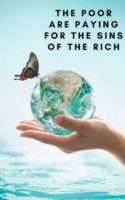If you live in the Western Cape you know we’ve had a rapidly rising water crisis. It hit critical levels mid-2017 with dam capacity at 15 to 30 percent. In March 2018 the province was at the brink of Day Zero – the day it was estimated that no usable water would be left in dams. Water restrictions and water rationing measures were put in place.
Day Zero never came. Cape Town went from almost being out of drinkable water to overflowing water supplies by October 2020. Even though Day Zero never came, a lot of problems did come. The drought resulted in the loss of 37 000 jobs, with an estimated number of 50 000 people being pushed below the poverty line.
According to Wikipedia, the Western Cape agricultural industry employs over 300 thousand people, with this sector being one of the biggest water consumers. With restrictions on irrigation, this meant there would be a drop in production and loss of revenue, which meant employees had to be let go. The industry lost about R14 billion. With the world being hit by the covid19 pandemic, it became even harder to recover this loss. Five months after the Day Zero crisis being averted, the country was put on hard lockdown. Much of the Western Cape agriculture takes place in the Cape Winelands. In the initial three-week lockdown, a loss of R650 million in revenue was predicted.
The People that were most-badly affected by the water crisis was the poor. The drought contributed to the widening of the gap between the rich and poor, and revealed how unequal our South African society is. During the drought, as Day Zero was getting closer, the wealthy found alternative water supplies and the poor were left stranded. The poor were now paying for the sins of the rich. What does that mean? According to Wikipedia, 20% of Capetonians live in informal settlements, but only 3,6% of the city’s water supply goes to them. These households depend on communal standpipes and consume much less water than people with an in-house connection.
As someone who lives in the township, I can say even people who have an in-house connection use much less water than the wealthy. We have always adhered to the water restrictions that were set in place by the province to keep Day Zero at bay. The water restrictions in the Western Cape during the water crisis were: no irrigation or watering of gardens; No hosing down of paved surfaces; No washing of vehicles, trailers, caravans or boats; No filling of private swimming pools; Use of portable play pools was prohibited; The use of municipal drinking water for water fountains or water features was prohibited. Only 87 litres of municipal drinking water were allocated to each person a day. In a township household, 87 litres would be what the entire household used for the day – not an individual. We do not take a showers that use 20 litres of water in 2 minutes. We wash in a ‘waskom’ and that takes just 5 litres of water on average. We do not have pools to fill up. We have no greenery to irrigate or farms. We do not have boats and caravans to wash and there are very few of us who have cars.
As the world is becoming more irreparable because of our carbon footprint, greenhouse emissions and other types of pollution, the poor suffer more than the rich. Every measure that is put in place to mitigate pollution – is our everyday life: Don’t drive alone; Use the carpool system ( we take busses and taxis; what other carpool system is there?); Don’t throw away plastic, re-use – every township home has a plastic bag that is full of other plastic bags, ready to go back to the shopping mall.
Yes, we must also play whatever part we can, but this is a call to the elite of the world: You are the ones who need to do most to stop the degradation of the planet and the depletion of our drinking water.
If you enjoyed this, you may like Did you know it’s time to panic here
Tell us: What more can we do as a country to secure our water supply? What more can you do as an individual to save water or to conscientise those around you?


